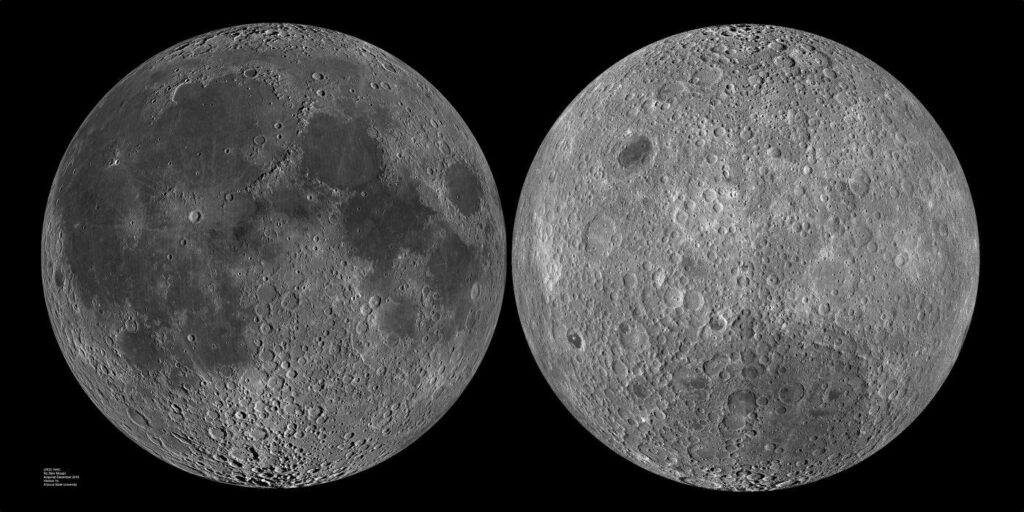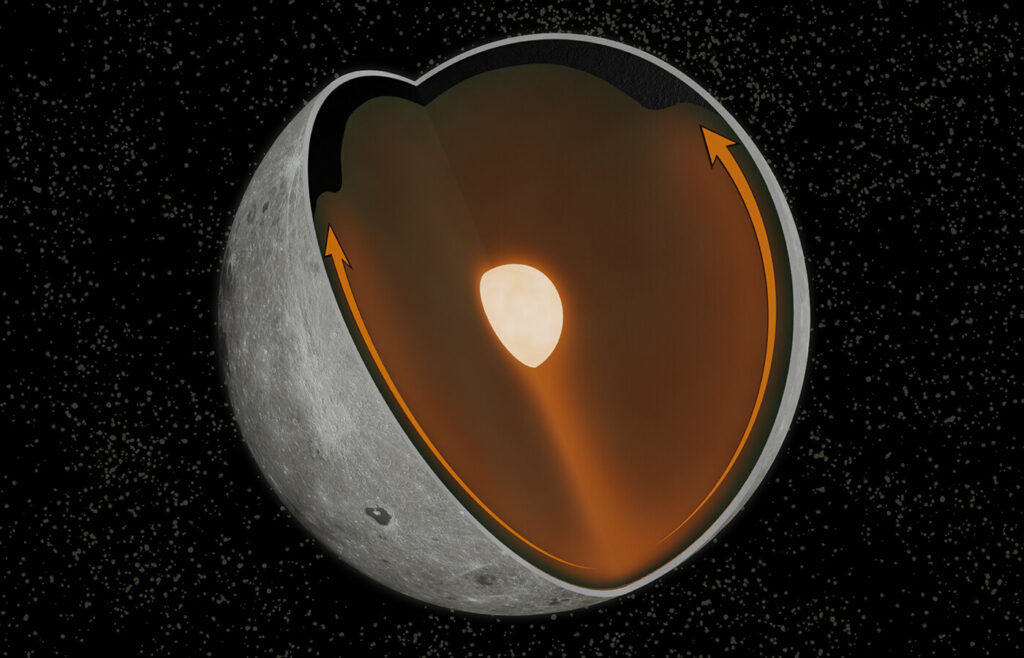Significant differences in the appearance and structure of the visible and reverse sides of the Moon are explained by the consequences of a giant collision that led to the formation of the South Pole — Aitken Basin. This is stated in an article published in a recent issue of the magazine Science Advances.

Already the first images of the reverse side of the Moon show that it is seriously different from the hemisphere, which the moon is constantly facing the Earth. Firstly, there are practically no seas on the reverse side — plain areas covered with solid lava (we see them as dark spots on the lunar disk). Secondly, the majority of the largest lunar craters are located on the reverse side. And thirdly, as spacecraft measurements have shown, the Moon’s crust on its reverse side is about 10-20 km thicker than in the visible hemisphere.
A team of American researchers believes that they have discovered the reasons for such a significant discrepancy between the lunar hemispheres. According to scientists, it’s all about the consequences of the grand collision that led to the formation of the South Pole — Aitken Basin. This is the giant impact formation of the Moon. Its dimensions are 2,400 × 2,050 km, the maximum height difference between the wall and the bottom is 16 km. It is believed that the crater was formed as a result of the collision of the Moon with a protoplanet that occurred at the beginning of the Solar System.
The collision that generated the Basin should have led to the release of a huge amount of energy. To better understand the effects of this event, scientists resorted to computer modeling. It showed that the collision had a significant impact on the interior of the moon, especially on the KREEP layer. This is a part of the lunar mantle rich in heat-emitting radioactive elements.

Based on the model, the collision launched a kind of “wave” in the KREEP layer, which led to the fact that its main part was concentrated in the area of the visible side of the Moon. In turn, the heat released by radioactive elements contributed to volcanic activity, which led to grandiose eruptions, one of the consequences of which was the formation of lunar seas.
According https://www.eurekalert.org

